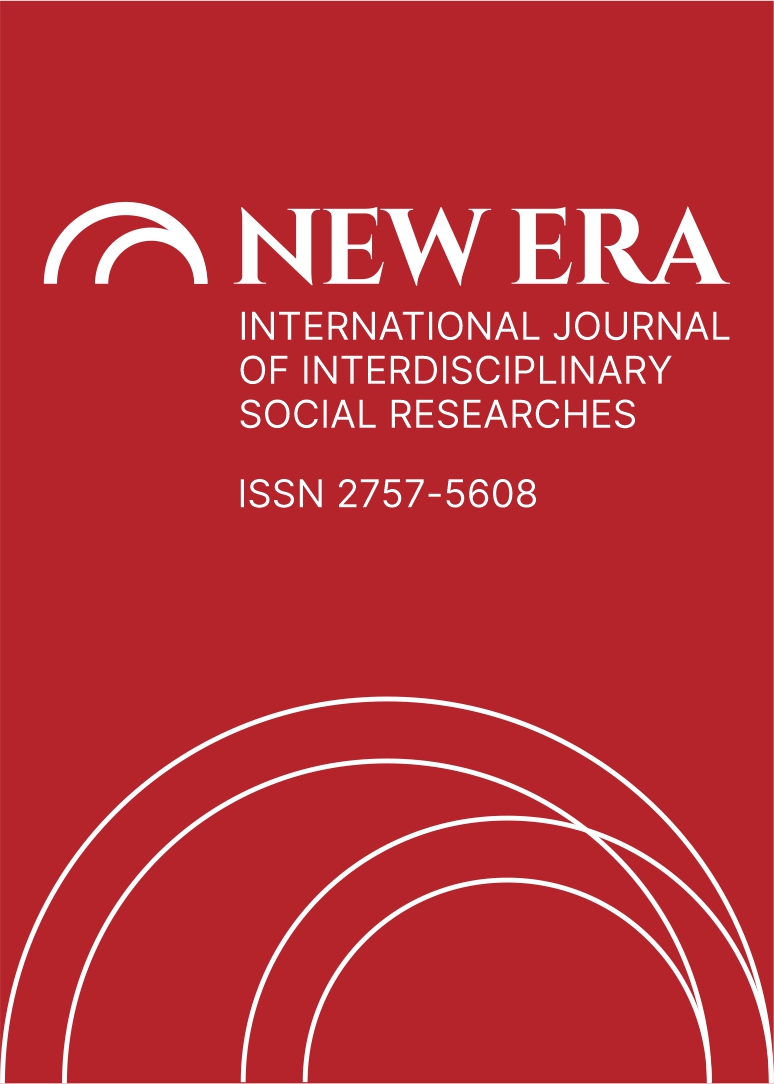EXAMINATION OF THE ARCHITECTURAL TEXTURE OF RURAL AREAS AND EVALUATION FOR CONSERVATION
DOI:
https://doi.org/10.5281/zenodo.7113060Abstract
It is possible to define settlement as areas where people live, carry out all their activities and benefit from it. Settlements are categorized differently depending on factors such as function, size within themselves. Proceeding from this, rural settlements are areas where agricultural and livestock activities are observed, remote from urban settlements, the natural environment is affected. In this sense, rural settlements are affected by the natural environment and affect the natural environment. It is possible to see the influence of the natural environment on rural settlements in the texture of rural architecture. The rural architectural texture is influenced by such an area of the region as geological, geomorphological and cultural. Today, rural architecture varies depending on development. This change made it necessary to identify and protect the rural architecture.
The aim of the study is to reveal the architectural texture of the village of Taşlıçiftlik, which is connected to the city center of Tokat, and to ensure its preservation. In accordance with this purpose, a literature review was conducted on the village of Taşlıçiftlik. Along with the literature review, oral history studies were carried out in the field and the literature was tried to be enriched. In accordance with the literature review, field work was carried out and the architectural texture was determined. However, in accordance with the observations made on the land, information about the full-empty condition of the houses, the state of ruin, the number of floors, the state of function and the construction system was obtained by conducting a relief study. The information obtained was mapped via GIS and tried to be interpreted.
References
Aydoğdu, Merve. Yöresel Mimarinin ve Kırsal Dokunun Korunması: Konya Emen Mahallesi Örneği. İstanbul: Fatih Sultan Mehmet Vakıf Üniversitesi, Lisanüstü Eğitim Enstitüsü, Yüksek Lisans Tezi, 2021.
Aydemir, Elif. Yöresel Mimarinin ve Kırsal Dokunun Korunması: Artvin Şavşat Balıklı Mahallesi Örneği. İstanbul: İstanbul Teknik Üniversitesi, Fen Bilimleri Enstitüsü, Yüksek Lisans Tezi, 2010.
ÇEKÜL Vakfı. Anadolu'da Kırsal Mimarlık. Bursa: Bursa Büyükşehir Belediyesi, 2012.
Çakır, Suat. Geleneksel Karadeniz Ahşap Konut Yapım Yönteminin Çağdaş Teknoloji Açısından Değerlendirilmesi. İstanbul: Mimar Sinan Güzel Sanatlar Üniversitesi, Fen Bilimleri Enstitüsü, Doktora Tezi, 2000.
Erbilen, Üçışık Süheyla. “Türkiye Yerleşme Coğrafyası”. (Ed.) Nuran. Taşlıgil ve Güven. Şahin Türkiye Beşeri ve İktisadi Coğrafyası. Ankara: Nobel Akademik Yayıncılık, 2019.
Eres, Zeynep. “Türkiye’de Geleneksel Kırsal Mimarinin Korunması: Tarihsel Süreç, Yasal Boyut”, Ed.: K.Kutgün. Eyüpgiller ve Zeynep. Eres Prof.Dr. Nur Akın’a Armağan – Mimari ve Kentsel Koruma, İstanbul: YEM Yayınları, 2013.
Geray, Cevat. “Türkiye'de Kırsal Yerleşme Düzeni ve Köy Kent Yaklaşımı.” Ankara Üniversitesi SBF Dergisi, 30(1) (1975).
Nerse, Serdar - Türk, Emrullah. “Kırsal Kentsel İlişkilerde Değişim: Yeni Tanımlamalar ve Kavram Okumaya Yönelik Bir Analiz.” Akademik Sosyal Araştırmalar Dergisi 63 (2017), 504-525.
Taş, Barış. “Sandıklı Bölgesinde Doğal Yapının Kır Yerleşmeleri Üzerindeki Etkileri.” Eastern Geographical Review, 16/26 (2011), 143-162.
Tümertekin, Erol - Özgüç Nazmiye. Beşeri Coğrafya, İnsan, Kültür, Mekân. İstanbul: Çantay Kitabevi, 2015.
Türk Dil Kurumu. Türkçe Sözlük. Ankara: Türk Dil Kurumu Yayınları, 2011.
Downloads
Published
How to Cite
Issue
Section
License
Copyright (c) 2022 NEW ERA INTERNATIONAL JOURNAL OF INTERDISCIPLINARY SOCIAL RESEARCHES

This work is licensed under a Creative Commons Attribution-NonCommercial 4.0 International License.


